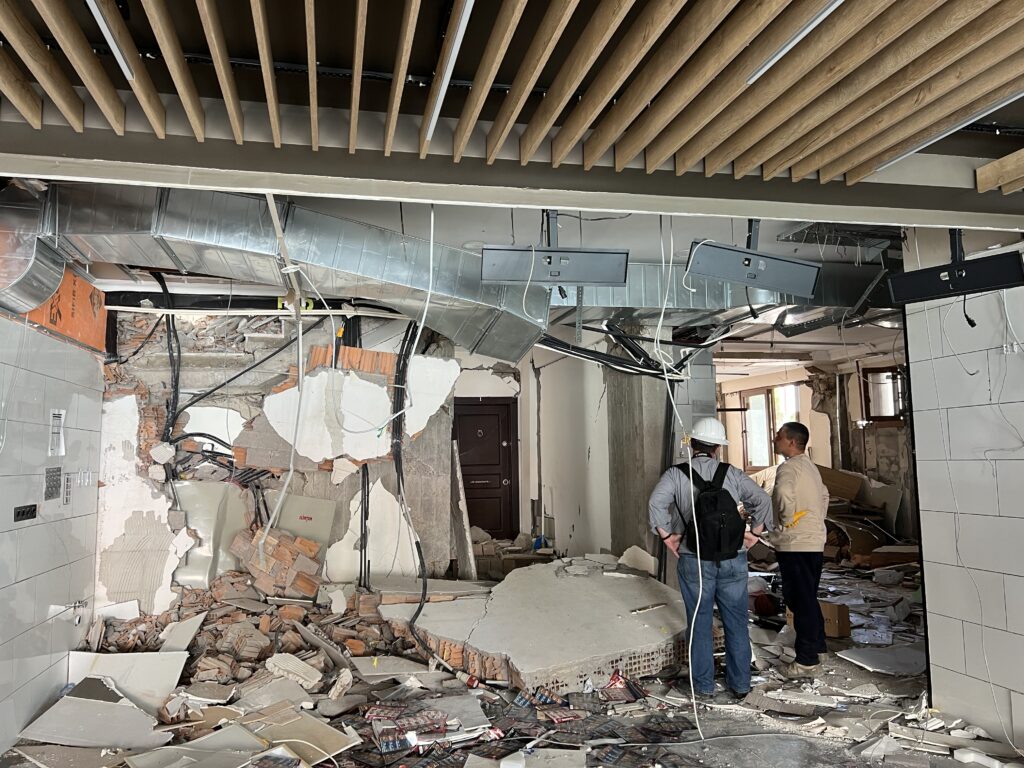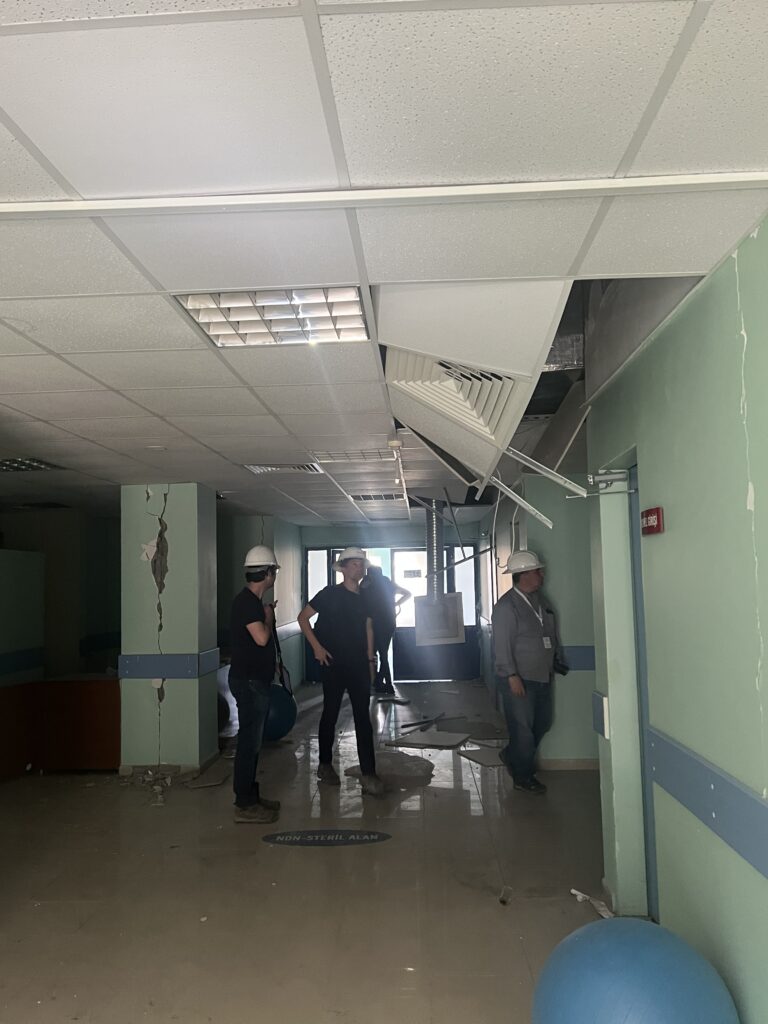Final Day of Earthquake Reconnaissance in Southern Turkey
March 11, 2023 – Day 6, Team 2
For our last full day in Southern Turkey, we started the day by driving back to the Hatay Province but went down the west side of the area along the coastline of the Mediterranean Sea. Our destination was the small seaside and vacation town of Arsuz. The small town experienced the damage and collapse of many buildings in its downtown core. While walking down a main downtown street, we had the opportunity to discuss the damage at a 6.5 story building. The building was still standing but had been heavily damaged by both earthquakes and a large aftershock. The building damage progressed in stages: after the first quake there was minor cracking, after the second quake the column started to develop cracking, and by the aftershock the damage was substantial. A Domino’s Pizza operated out of the ground level of the building, where the owner and his family lived in an area of the floor behind the store. With mouths agape, we listened to him tell the harrowing tale of needing to rescue his son after the last large aftershock because a nonstructural CMU wall fell on top of his son’s bed. We were relieved to hear the boy survived but the building and their shop will need to be demolished. It was a bittersweet reminder that people’s livelihoods are detrimentally and often permanently affected even if a building satisfies the life-safety performance objective, a lesson to us all that we should strive to achieve building performance beyond the code minimum life-safety.

Inside the ground level of the Domino’s Pizza. The residential portion of the floor is in the back right of the photo. There was substantial structural and nonstructural damage, but fortunately no lives were lost.
Another highlight of the day was touring Erzin, a small town with ~50,000 residents on the north side of the Hatay Province. We had heard of Erzin from a New York Times article that described the city’s mayor touting the exceptional building performance and no lives lost due to his demand for good construction standards and practices. The article continues to also describe that the city is constructed on solid bedrock, which may have been a reason for the city’s high performance during the earthquake. We were able to walk the local hospital that experienced very little structural and nonstructural damage, even though none of the equipment was anchored to our surprise. The building had evacuated its six patients but much of the building was intact. However, it is likely that the hospital will be demolished and replaced with a 50-bed precast building, per our discussion with the security guard. As we drove through town, we notice the limited damage and the return of residents to their daily lives, which was refreshing to see on our last day of reconnaissance. We wrapped up our trip with one night in Adana before flying to Istanbul and then back home to the United States the following day.

Team 2 walks through the hospital in Erzin. While structural and nonstructural damage appeared to be minimum and repairable, we were informed that the hospital would eventually be demolished and replaced with a new 50-bed building.
